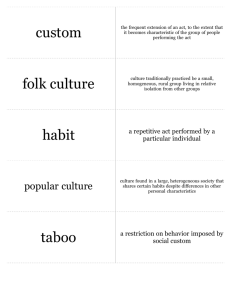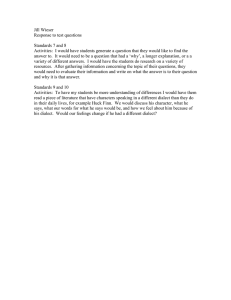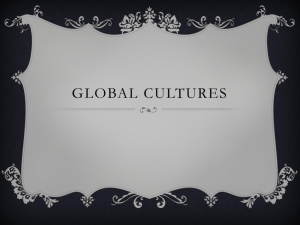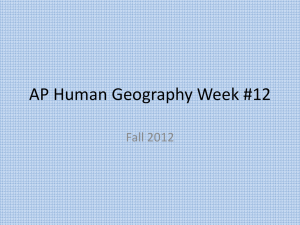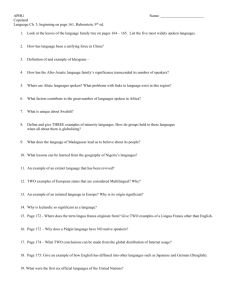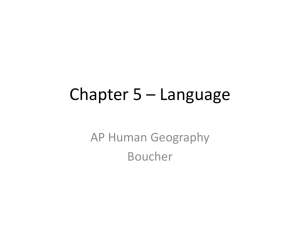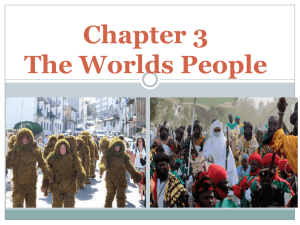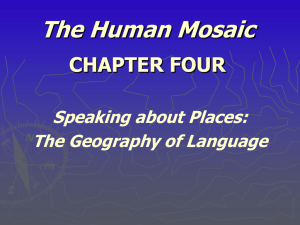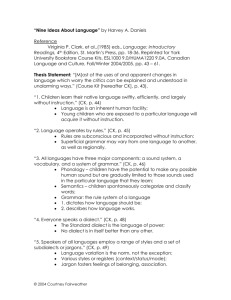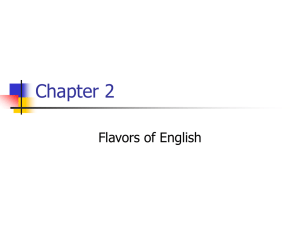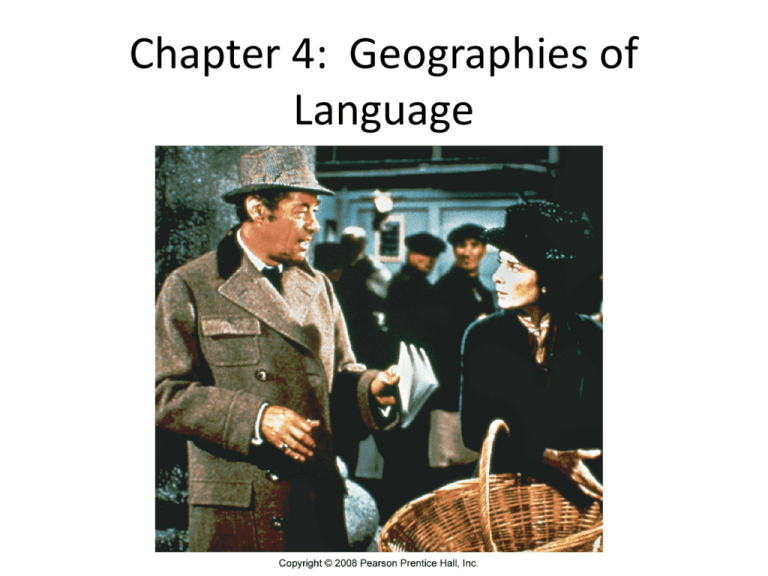
Chapter 4: Geographies of
Language
• How is language connected to culture?
– Provides a basis for communication
– It shapes identity
– Reflects a relationship with place
– Language is situational and flexible
– It is dynamic, changes
– Language vs. dialect
– Mutual intelligibility
• All languages are capable of expressing all
kinds of thought
– Different languages express thought in different
ways
– Social influences:
• Fork, coffee in Japanese
• Farpotchket in Yiddish
How many languages? How many speakers? Geographical extent?
About 6900 languages are spoken on Earth.
A lot of small languages, but just a few large ones.
Large languages a relatively new phenomenon.
9 largest languages (by speakers); all but three are
Indo-European.
• Language families: common ancestor
How many languages within a family?
Niger-Congo family has almost 25% of
the world’s languages.
Percent of people speaking languages of
the different language families.
Dominance of Indo-European languages.
Nearly 50% of the world speaks one of
these.
• Hearth—where a language began
• How do languages diffuse?
• Importance of agriculture and trade
– Austronesian languages, Niger-Congo languages
• Where did Indo-European languages begin?
– Kurgan Hypothesis
– Anatolian Hypothesis
– Romance Languages
• Derivative of Vulgar
Latin
• Global diffusion of languages
– Political forces
– Economic forces
– Religious forces
Spanish in Argentina, but Italian too!
Mauritania—signage in
French & Arabic
• Linguistic Dominance
– Not by size necessarily
– Chinese vs. English
– Language gap—stateless languages
– Official languages
• None in the U.S.
• UN—recognizes 6 languages: English, French, Spanish,
Russian, Arabic & Chinese
• EU—recognizes 23 languages—all EU docs must be
printed in all of these languages!
•
•
•
•
•
Loanwords
Pidgin
Code switching
Creole
Lingua Franca
Hear “David Copperfield” in Jamaican Patois, Spanglish, Hawaiian Pidgin, and the
vernacularsof Trinidad & Tobago
English, the world’s lingua franca?
Will English become a global, universal language?
Copyright © 2014 John Wiley &
Sons, Inc. All rights reserved.
• Disappearing Languages: Enduring Voices
Project
Language Hotspots
•
Brussels bookstore—signage in both French and Flemish (bottom)
Language Diversity in the U.S.—Dialect Regions
Hans Kurath, 1930s, Isoglosses
Using the words used for
pancake he was able to map
isoglosses and identify
dialect regions.
Major dialect regions on the U.S.
What do you call a carbonated beverage?
Take the New York Times Dialect Quiz
Other dialects:
African American English –has its own grammatical rules;
evolved through resistance; relocation diffusion.
https://www.youtube.com/watch?v=TVJPB3W54Tc
Chicano English—Mexican Americans

